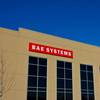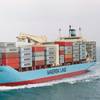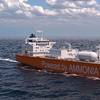Training tomorrow’s workforce of skilled artisans and engineers is a leading priority of America’s public and private shipyards.
It takes an average of six to eight years to train a fully qualified shipyard worker to the level of journeyman mechanic, technically skilled to work on nuclear submarines and aircraft carriers. The average age of a shipyard worker is about 45 years, and 33 percent of shipyard workers are over the age of 50.
To meet this challenge head on, the naval shipyards, under the guidance of Naval Sea Systems Command (NAVSEA), are rejuvenating the skilled workforce base through the shipyard apprentice program.
The congressionally supported shipyard apprentice program for blue-collar production trades is a subset of the shipyard workforce revitalization program, designed to ensure the naval shipyard workforce will have the skills and flexibility required to meet the demands of the future workload and business environment.
A four-year program, the shipyard apprentice program trains employees in occupational fields such as welder, pipefitter, electrician, machinist, rigger, fabric worker and metal inspectors through formal classroom trade theory training and on-the-job work experience. The program also includes academic classroom training with a community college partner.
Graduates of the program are U.S. Department of Labor certified journeyman, with a technical certificate or associates degree. There are currently more than 1,750 apprentices in the four naval shipyards (Norfolk, Va.; Puget Sound, Wash.; Portsmouth in Kittery, Maine; and Pearl Harbor, Hawaii).
Each naval shipyard has apprentice programs tailored to meet its specific requirements and the NAVSEA command guidelines. Working in partnership with labor unions and employee/management organizations, the shipyards hire candidates based on projected workload, workforce demographics and attrition.
Echoing Rear Adm. William Klemm, NAVSEA’s deputy commander for Logistics, Maintenance and Industrial Operations’ vision of “One Shipyard -- Four Locations,” the shipyards share information to improve apprentice training as well as program management and administration.
At Pearl Harbor, Puget Sound and Portsmouth, a formal school to work program is offered where high school students prepare for a career in government by combining academic study with paid structured work experience at the shipyard.
Projections indicate that over the next ten years, the shipyards will need to hire and train an additional 1,400 workers each year to compensate for attrition and maintain critical skills. Hiring for the apprentice program will continue to be strong over the next two years. For fiscal year 03, the Navy plans to add at least 125 apprentices at each naval shipyard. In November 2002, Congress approved the 2003 Defense Appropriations Act that added $10 million for the Shipyard Apprentice program.
Norfolk recently completed its largest recruiting and interviewing schedule since the program restarted in 1996. “Our program is very dynamic and ever-changing,” said Dan Rothermel, shipyard apprentice program administrator. “We started the program in 1996 with an enrollment of 16 students. Today we have 420 active apprentices. We currently plan to hire 140 students for our next class beginning in July 2003.”
Puget Sound recently celebrated the long-awaited opening of the Manufacturing and Engineering Technology program at the West Sound Technical Skills Center. The Puget Sound Shipyard and Superintendent's Association have donated more than $200,000 of equipment over the past three years, with much of the equipment coming from the shipyard’s submarine inactivation and recycling program.
"We identified equipment that's in good shape and could be of use," said Capt. Clarke Orzalli, commander of Puget Sound Naval Shipyard. "This improves their technical programs and enhances the caliber of potential recruits to the shipyard. It is a win-win for the shipyard and it’s a good community outreach program."
Puget Sound’s apprentice program also supports Trident Refit Facility (TRF) Bangor and Naval Undersea Warfare Center, Keyport Division, while Norfolk supports TRF Kings Bay.
Source: NAVSEA
Featured videos

Taking the First Step Toward Autonomy

Send in the Drones (to deep, dark, confined maritime spaces)
Subscribe for
Maritime Reporter E-News
Maritime Reporter E-News is the maritime industry's largest circulation and most authoritative ENews Service, delivered to your Email five times per week











